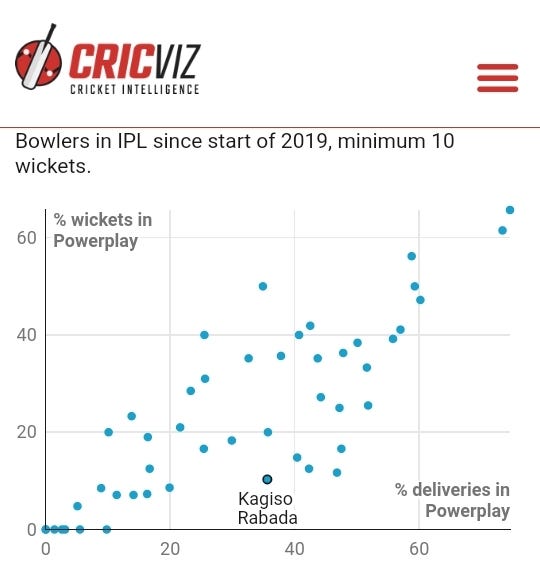KG is one of the best Test cricket bowlers out there, but not even a partnership of him and a prime Dale Steyn would have taken wickets on that Kandy pitch. AB would have scored 500 on it and De Kock would have rediscovered his form with a 42-ball century in a Test match.
That Kandy Pitch
Remember when everyone, myself included, was all up in arms over India's Ahmedabad pitch? The dust bowl spun from the first over of the first day, and many of us felt that it did not provide the conditions for a proper contest between bat and ball.
That is what we want, right? A pitch that offers a proper contest between bat and ball. Not one that favors one side too much. We want to see skills and application and all the great things that make Test cricket a joy to watch. Right?
If this is so, then why is there no noise at all over the Kandy pitch? The pitch gave absolutely nothing to the bowlers. Ask Dhananjaya de Silva who bowled a back-breaking 30 overs in the first innings. Before 21 April 2021, Dhananjaya had bowled an average of 11 overs an innings. But in Kandy he was required to put in a long shift, otherwise the frontline seamers and spinners would have been bowled into the ground.
A combined first innings of total of 1189 runs in a match that ended in a draw is more than enough evidence on the nature of the pitch. Neither team was bowled out, both declared (Bangladesh declared twice).
If you enjoy stats, here’s something that puts puts things into context, the average combined first innings score since January 2020 is 649.77. The average first innings score by a team is 324.89 runs. In this match, the average was 594.5. Bangladesh scored 541/7d, while Sri Lanka also declared at 648/8.
In fact, a combined total of 1189 runs in four innings is not uncommon. 1189 is within the region of the average combined innings total.
So, why the silence over the pitch? Unless if we are saying poor pitches are only those that are difficult for batters to thrive on...
The Unicorn
What is everyone talking about? AB's 5000-run milestone. Who can blame them? AB is one of those once-in-a-generation batters and appears to be getting better at T20 as he grows older. He is looking unstoppable at 37.
This reminded me of what Eric Simons said to me, something along the lines that T20 is not just for younger players. Yes, people make fun of CSK with their average age of 30.08 years. But, there is something about T20 that tells me that it is a format most likely to be enjoyed by younger people while being played well by older people.
The older the player, the more self-aware they are and the better they understand their game. With understanding comes better execution of skills and management of the game. This is probably because many players specialize in T20 cricket quite late in their careers as they focus on Tests and ODIs early on.
So, it is the players who are now retired or semi-retired from international cricket who really work on their T20 skills and hone in on their T20 instincts, and travel the world competing with other specialists. There is an unspoken stereotype that accompanies T20 specialists: they are mercenaries. In a strange way, it is no different from how Kolpak contracted players were viewed. National boards pretend they do not exist.
This prevents younger players from specializing. The ultimate dream is to play international cricket, specializing in T20 reduces those chances.
I guess this will change in the future, or at least I hope it will. The many leagues around the world offer a good incentive for the growth of more professional T20 players. Maybe more younger players will step into that zone. It would also help if more national teams selected more specialist T20 players. The problem for a while now is that selectors prefer to have "all-format" or at least 2-format players.
I feel T20 requires a very particular set of skills, skills that make players a nightmare for the opposition.
Let's get back to AB and his 5000 IPL runs.
He didn't just get there, he got there faster than everyone else who has reached that milestone. It's taken him 3309 balls at a strike rate of 152.70 - the highest career strike rate among the top 20 run-getters in the IPL. This year so far, he has scored 204 runs from 117 deliveries, at a strike rate of 174.35.
Unlike most batters who show a clear preference or weakness for pace or spin, AB is different. He is at home against both. Also, unlike some players who have to make a trade off, choosing between consistency and a high strike rate, AB enjoys both.
Talk about an outlier.
KG the Enforcer
There are no absolutes in T20, only fluidity. Faf du Plessis spent his career batting at number three, but often opens for CSK. Sunil Narine sometimes opens the batting and can jumpstart an innings. He can also come in at any other point. Chris Gayle is now batting 3. That is where teams get their competitive advantage, from fluidity. It gives them the ability to adapt.
But, this fluidity seems to be mostly concentrated in batting. It’s as if batters are the only ones that need to be versatile. You hardly see it with bowlers. If a team goes through the Powerplay without bowling their premier quicks, questions are asked, coaches are blamed, calls for heads to roll are amplified. So this gives bowlers an unwanted rigidity. The result of this rigidity is reduced impact, and yet T20 is a high impact format.
People would love to see AB De Villiers bat for 20 overs, there are bets as to how many he can score if he opened. There is a fair chance he might score a lot, I mean A LOT, of runs. But, there is also the risk of reducing his impact. So, his position is anything from number three to number 5 or 6, depending on how wickets fall. The idea is to bring him in when he can have the highest impact.
Evolve and adapt.
It is necessary that premier sportspeople do so because their opposition is consistently studying them and looking for ways to neutralize the threat that they bring. This is what many batters have done with Rabada, they have studied him and have now found a way to keep him quiet in the Powerplay.
KG doesn’t get many wickets in Powerplay anymore. This is not happening because KG has lost his edge, not at all. His reputation precedes him and it appears teams are willing to play him out. According to the people at Cricviz, IPL batters only attacked 41% of his powerplay deliveries. They just won’t risk it against him. I mean, who would? KG is everything you want from your premier fast bowler: fast, accurate and aggressive. But by sitting back, teams are neutralizing him.
So, what can be done? Powerplay wickets are very important. They reduce the batting team’s attacking intent as the match progresses.
Bowl KG in the middle overs. Here is why.
Yes, KG has a good economy in the Powerplay, but the fact that teams emerge from the Powerplay with lots of wickets in hand after having seen off Rabada’s threat means that they can accelerate in the middle overs. So, because batters sit back to KG in the Powerplay, he doesn’t get them to attack or play false-shots. The only way around this is to bowl a bowler who gets them to do that.
Not only that, but batters are attacking medium pace bowlers (below 140km/h) in the middle overs from ball one. They are eating them for breakfast. But, they are always hesitant to attack the faster pacers. Therefore, KG’s skill, pace and aggression could reap more rewards in the middle overs as he puts batters on the backfoot. Rebrand, evolve and adapt T20 KG from him being the Powerplay bowler into KG the Enforcer. He has all the skills and deliveries that can make the middle overs a nightmare for batters.
Bowl spin and Ngidi in the Powerplay.
Quinton De Kock's form
I don't know how many of you relate to this. I am not really a gardener, but I do do a bit of gardening. I have this small garden, I don't now if I have any right to call it a garden, even. My garden is on autopilot most of the time, as I only pay attention to it every now and then. When I feel inspired, I do a bit of weeding, watering and apply some manure/fertilizer. This doesn't happen often because most of the time I am either too busy or just too lazy to be bothered.
But there is one thing that my garden has taught me: time is not linear, it is cyclical. After winter plants do not flower immediately. First they grow leaves, get themselves into the "good place" where they can sustain flowers and then, only then, do they flower. Flowers do not try to flower, it is a natural outcome of things, when they reach a certain point, they just do so, it happens naturally. And when it happens, it's a beautiful sight.
There is no switch that turns on plants from bare and leafless to full of leaves and flowering. All you can do is to just keep watering, weeding and tending to them even when they look as if there is no hope.
I think of form in the same manner. Form is cyclical, like the seasons, and not linear. There is no switch that takes a player from bad form to the best form of their life. Only time.
Thank you to everyone who has shown their appreciation of my work and this newsletter. I am entirely freelance but have no intention of putting content behind a paywall. However, for me to be able to continue producing more content, I depend on your patronage. So, please do support my work on Patreon.
Also, please encourage anyone whom you think may be interested in my work to subscribe.







